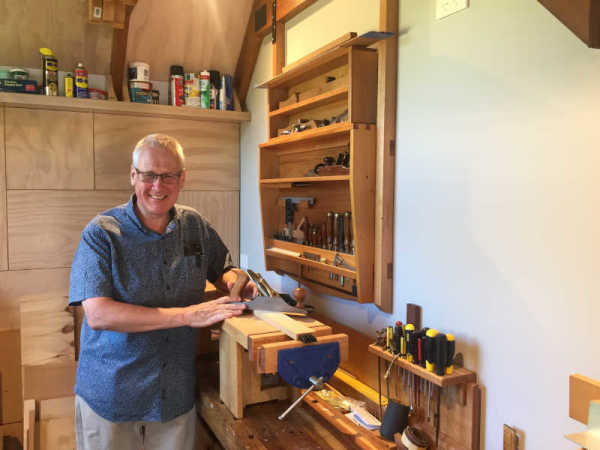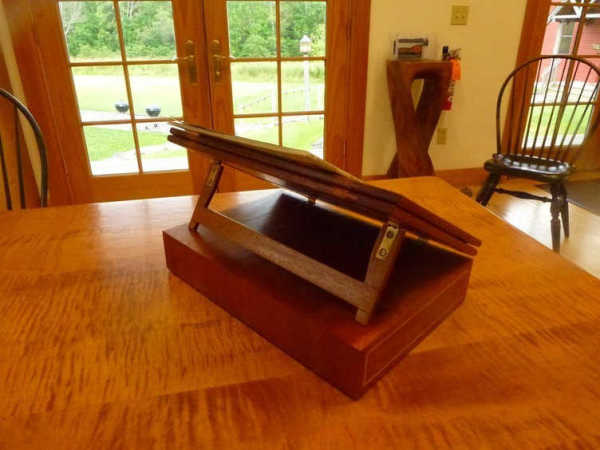Timber hobbyist invests time and passion in source material
22 June 2021
Nicole Bittar
“If we are to prosper as a broad-skilled and diversified economy and society, we need to re-invest in timber’s growing, processing and manufacturing capability. By doing so, we will create jobs and opportunities for Australians.”
Spoken like the true former commercial leader and dedicated timber craftsman that Jan Lacki is.
An international career in infrastructure and aviation might have been far removed from the organic nature of woodworking for this former Shell Petroleum, Melbourne Airport and Z Energy project management executive. But creative passion runs deep.
The Melbourne-based retiree developed an inclination for crafting his unique pieces from his DIY Father. Necessity might have been the mother of invention for his dextrous Dad during the pre and post war years, but for Jan, a keen childhood interest lay dormant for several decades due to corporate demands.
Semi-retirement in 2013 changed all that. A sabbatical in Rockport, Maine, USA, offered the opportunity to rekindle Jan’s hands-on tendencies. He undertook an intensive three-month furniture-making course at the esteemed Center For Furniture Craftsmanship (CFC), which was helmed by the cream of America’s wood artisans. The experience inculcated Jan’s passion for fine crafting and led to prized tutors becoming trusted confidants.
“While at CFC, I had the opportunity to create projects that utilised American timbers, such as American Cherry, Walnut, Rock Maple, American Oak and Ash,” Jan says. “All of these timbers came from sustainably grown forests and are ethically sourced.
“CFC has a strong focus on ethical and sustainable sourcing of timber used at the school.”
The same is true of Jan’s six-year association with the Glen Waverley-based Waverley Woodworkers Inc. The workshop-centric community club prides itself on a sustainable approach to source material, equipment and tutelage. In fact, the club’s reclaimed hardwood workbench and storage units are courtesy of Jan’s handiwork.

What began as a furniture-making hobby for Jan developed organically with the help of his wife, Barbara. His client base consists of individual and small-business clients in the market for unique, finely crafted timber furniture and objects.
With a yen for Danish mid-century designs reproduced with Western Australian Jarrah, European Beechwood, American Cherry and Cedar, Jan’s pieces feature hand-cut joinery and reverential attention to detail that befits the pristine raw material.
A replica of Thomas Jefferson’s portable writing desk (the original found at The Smithsonian Institute in Washington DC) is comprised of Mahogany, Alaskan Yellow Pine and Poplar. Jan says his solid-wood version, featuring brass fittings and hand-crafted splines, dovetails, inlay, mortice and tenon work, is “dimensionally accurate yet probably better constructed than the original”. The proof is in the pudding, even if the provenance equals that of the original.
Jan’s happy place is undoubtedly his home workshop, which was designed by one of his two adult sons, and the internal fit-out is hand-built, including the timberwork and cabinetry, by Jan. Keeping the design craft and woodworking tradition in the Lacki family tree is firmly rooted in sustainability.
The bigger picture for the Australian timber industry is similarly viewed. “We have the land, climate and people skills to develop and maintain a highly developed timber industry,” Jan says. “Building our homes from sustainably grown and manufactured Australian or imported timbers makes good environmental sense by reducing the carbon footprint.”
As such, Jan secures his source material from local suppliers, such as Matthews Timber, Whelan the Warehouse and the social media-savvy The Wood Guy in Preston. This not only extends the supply chain, but it also unifies the ultimate renewability of sustainable timber.
Top of Jan’s supply list is: “Timber that comes from ethical sources, such as certified native forests and well-managed plantations.”
Furthermore, he imparts an environmental and economic perspective into the equation.
“Recycled wood, which is often saved from landfill, re-used furniture found on nature strips, tree limbs and offcuts from council tree pruning, are ideal,” he says. “Re-using these types of timbers saves them from landfill and makes good economic sense.
“Also, I am careful not to use timbers that are on restricted-use registers. We are fortunate in Australia that there are regulations around the use of restricted/protected species.”
